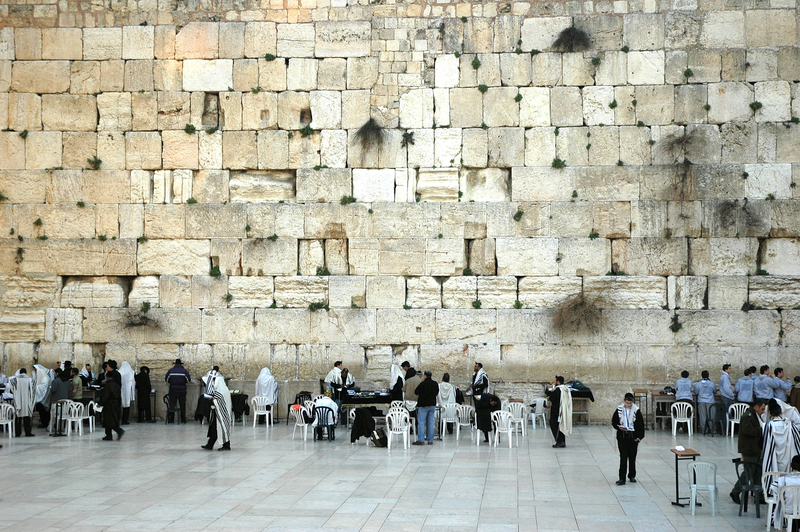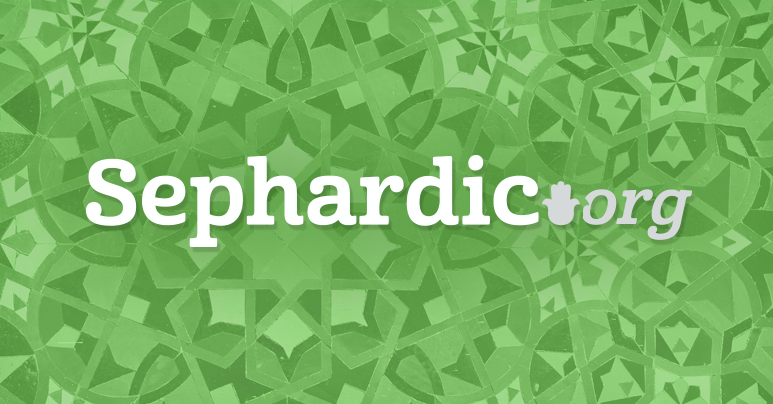
The Procedure of the Urim and Tumim and our Morning Prayers
The Torah mentions five levels or grades of communication that take place from the celestial regions above to the physical world down below. According to some commentators they are in descending order נבואה Prophecy, רוח הקודש Divine Spirit, אורים ותמים Urim Vetumim,בת קול Heavenly echo and גורלות casting of lots. Our parasha introduces us to the articles used in the third noted level of communication - אורים ותמים - 28:30 - "You shall place את האורים ואת התמים into the hoshen of judgement" - While the Talmud (Yoma 73) details how and when it functioned - It does not specifically answer what these articles were. Most Rishonim maintain it was a piece of parchment on which the שם המפורש - was inscribed and which was placed into the fold of the doubled over hoshen - breastplate worn by the כהן גדול - The Ritva asserting that they consisted of two parchments containing two Divine Names. R. HaAri appears to subscribe with the latter view noting the אורים was associated with the שם מ״ב - the תמים being associated with שם ע״ב - It behooves us to investigate how these functioned and to compare its method of communication with our daily morning service which includes the recitation of שמע and the עמידה -
How the Urim and Tumim were Used
When a question of national import arose - usually the King or leader of the Sanhedrin would present the petition to the כהן גדול while the latter was dressed in his clothes of service. The questioner was to inquire in a voice that has an audibility similar to that required when reciting the silent amida. This requirement is expressed in the Talmud in terms of mimicking Hannah's method of prayer at Mishkan Shilo- with no one hearing except the Kohen Gadol - while only her lips moved and her voice not heard. The כהן גדול would face the Aron and meditate intently on the name(s) that were written on the אורים ותמים - The names of tribes and patriarchs totaling 72 letters were carved into the 12 stones of the חושן - these would thereby illuminate giving the כהן גדול the wherewithal to decipher an answer. It is obvious from the Talmud that in using it - the כהן גדול required to possess an aspect of רוח הקודש - As it (Yoma 73) rules - "Any kohen who does not speak by means of רוח הקודש - and upon whom the divine presence does not rest is not consulted."
Divine Forces of 42 and 72 - The Urim and Tumim- The Hoshen and Ephod
We noted above that R. HaAri taught that the אורים was the parchment upon which was written the 42 letter divine name. The תמים was the parchment upon which was written the divine force of 72. Furthermore he teaches that the אורים represented the celestial male active force associated with the חושן - the תמים represented the celestial female passive force associated with the אפוד - This is the secret behind the Misva in our parasha 28:28 - "The חושן or breastplate should not become loose from the אפוד - Onkelos translates it as that they should not come apart. The forces expressed by the חושן and אפוד - male 42 and female 72 shall be unified.
The Inserting of the Divine Names by the Heart and the Shema
We are required each morning to recite the שמע with the accompanying portions of ואהבת and והיה אם שמוע - prior to ascending to communion with God during the Amida. It appears to me that in order to prepare properly for that ascent - we are to meditate during the portions of שמע on the divine forces placed by the heart that arouse the spiritual חושן and אפוד - Amongst the detail meditations noted in theסידור הרש״ש is that beginning with ואהבת - one is to ponder that the 42 words of the portion until ובשעריך - are parallel to the divine name of 42. With the recitation of each word one is to connect a single letter of the 42 letters of the אנא בכח - to it. He will hereby place his personal אורים -upon his heart. As the verse reads "These words shall be placed upon your heart". The second paragraph beginning with והיהconsiders ones acceptance of the yoke of misvot - He is to ponder on the 72 words at the start of the portion until ושמתם - which are parallel to the divine name of 72. With the recitation of each word one is to connect one three letter divine force of the 72 that emanate from the verses in Parashat בשלח that were used to split the sea - ויסע ויבא ויט - to it. He will thereby place his personal תמים -upon his heart. The two paragraphs which are the male and female spiritual channels - can be joined - with one theoretically fulfilling the commandment not to separate the חושן - from the אפוד - All this a preparation for our petition in the Amida.
The Silent Amida and the Hazara Parallel to the Petitioner and the Response
We have already noted that the petitioner of the אורים faces the Aron (הלכות כלי המקדש) - towards the שכינה while moving his lips to evoke a response from above. It appears to me that our Sages equated the requirement that the voice of the petitioner is to be inaudible with that of the Silent Amida. The Talmud rules that both have their roots in the method of prayer of חנה performed in front of עלי הכהן - The Vilna Gaon (Aderet Eliyahu) offers the novel idea that עלי had consulted the אורים ותמים to determine the intent or status of חנה at the משכן - He had misread the letters that had illuminated on the חושן as שכרה (she is drunken) instead כשרה (she is upright). חנה rightfully accused the Kohen Gadol of misreading the message as he failed to ascend to the level of רוח הקודש - a prerequisite to properly interpret the divine response. He apparently accepted her retribution and meditated properly on the divine names. He then properly responded that all is answered and she should go in peace.
Equating the Narrative of Urim and Tumim with Shema and Amida
The parchments containing the two divine names of 42 and 72 are inserted into the folds of the חושן - This parallels the portions of ואהבתand והיה which should be set on our hearts in preparation for the silent prayer of the Amida. The petitioner of the אורים stands behind theכהן גדול towards the ארון the place where the שכינה resides. The query must be made in an inaudible voice - as it says regarding חנה thatהיא מדברת על לבה - She was speaking silently - But according to our approach we can elucidate as - When praying the Amida we must focus on the Divine Names that had been placed on our hearts during the Shema. The Kohen Gadol must be facing the Aron - While meditating on the divine names residing upon his heart as he reaches a level of רוח הקודש - He fulfills the Misva to keep the חושן - male force attached to the אפוד - female force. The latter force is associated with the שכינה or Divine Presence that transmits the message via the 72 letters which illuminate from his heart. He then responds audibly. All this is parallel to the lofty level of prayer of the שליח ציבור called theחזרה or repetition of the עמידה - This latter prayer according to R. HaAri is much more elevated than it's silent counterpart - Hence it can be recited audibly. In summary, we have attempted to detail our assertion that the procedure to procure a proper communication with the שכינהabove is to mimic that of the Urim VeTumim - We are to focus on the divine names opposite our hearts when reciting the 42 words of ואהבת - and 72 words of והיה - and then ascend to commune with the divine in the silent and audible Amida.








